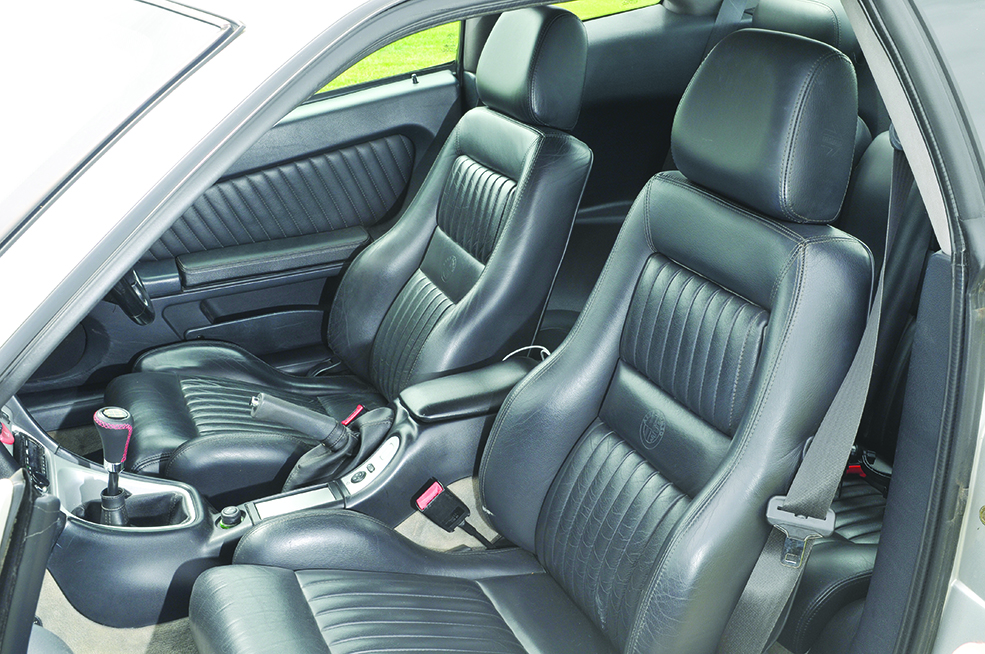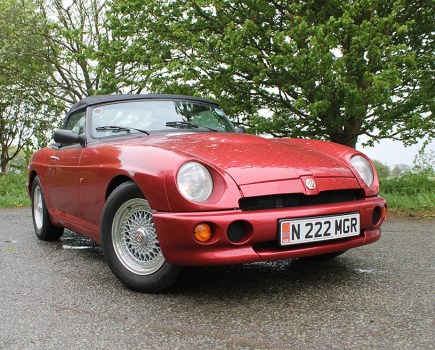Back in the mid ’90s this was Alfa’s riposte to the BMW coupe. How does the Alfa Romeo GTV stack up 20 years on and should you buy one?
“Still want that 3-Series?” asked the front cover of Autocar on March 27, 1996 above an action photo of the Alfa GTV. The magazine had already tested the cars over in Italy – another front cover spot, this time with the headline “Even better than they look” – but here was the first test of the car in right-hand drive form and they came away impressed.
Back then the 3-Series was in its E36 generation which makes such a question something worthy of serious thought. After all, that third-generation 3-Series was a mighty leap forward even for BMW, so for Alfa Romeo to catch up so dramatically was a real surprise. Especially when its recent history had been slightly shambolic: the 155 and the 145 had signally failed to recapture the marque’s glory days.

Much like Jaguar under Ford though, this was Alfa Romeo with the might of the Fiat Group behind it and unsurprisingly, the ‘916’ GTV and its open-topped Spider sibling owed more than a little to the parent company’s parts bins.
Underpinning the pair was the so-called Tipo Due [Type 2] platform developed for a range of Fiat Group vehicles from Alfa 145 to Lancia Delta and Fiat Tipo and Coupe. One of the early attempts at a modular vehicle platform architecture, it was designed to use MacPherson struts at the front and rear trailing arms, although the two Alfas both used a more advanced multi-link set-up in place of the trailing arms, employing upper wishbones with twin lower links and anti-roll bar.
The project had begun in the late 1980s when it was accepted that Alfa Romeo needed to re-establish itself in the coupe market and to ensure its new contender offered sufficient glamour, Pininfarina was called upon for the styling work.

The design which eventually won acceptance from management was the work of Pininfarina’s Enrico Fumia and although it’s often thought that his work was influenced by the 1992 Alfa Romeo Proteo show car but of course the production car’s development was well under way by the time this appeared at the Geneva Show in 1992. Indeed, Fumia later confirmed that his first sketches were made as early as September 1987 and the final model was formally approved by Fiat Group CEO Vittorio Ghidella in July 1988.
Fumia did however admit to being influenced by his own Audi Quartz concept from the 1981 Geneva show but regardless of the influences which drove him to create the car, the result was a fresh and neat piece of work which broke new ground for Alfa Romeo but which couldn’t fail to be Italian, from its wedgy nose to its stubby tail.

Less well received was Pininfarina’s proposed interior, which Fumia later described as innovative… and for which we can most likely read crazy. It was the job of Alfa’s own Centro Stile under the direction of Walter de Silva to create a suitable interior and anybody who has sat in either of the 916 models will agree that they did an equally impressive job in creating a neat and modern ambience with just enough retro nods to Alfa history.
The GTV and Spider were launched in Europe in March 1996 with just two engine options: the ‘Busso’ V6 in 3-litre, 24-valve form rated at 230bhp and the four-cylinder 2-litre.
Although badged as Twin Spark, the 2-litre shared only the name with earlier Twin Spark engines which had been based on the long-serving ‘Nord’ Alfa twin cam dating from the 1950s. Transversely mounted and essentially an enlarged version of the modular Fiat engine already used in 1.8-litre form in the Barchetta, it gained an Alfa Romeo cylinder head housing 16 valves and eight spark plugs and with it an entirely new character full of brio.

Road testers raved about the new Alfa duo at launch – the more so the GTV since the Spider was by nature less rigid and less of a hardcore performance car. Yet again, here was a car touted as being the ‘car to save Alfa’ but how does it shape up in old age?
Surprisingly well is the answer. The GTV is still firmly in the affordable bracket as a modern classic and yet even neglected examples seem to survive abuse better than you might expect. Certainly they don’t seem to rust unless they’ve been crashed and repaired and in that respect the metalwork survives better than even the E46 generation of BMW coupe. The fact that the big clamshell bonnet is plastic helps of course, but by and large these cars were surprisingly well made.
Entering the car is a great illustration of how your brain is wired: like predictive texting, some get it immediately and others will forever struggle with the concept. As with the rear doors on the later Alfa 156, the car does away with visible handles, using the lock barrel as the release button and the door itself as the handle.
Having worked this out, you may well discover that the door doesn’t want to stay open, a legacy of Alfa’s traditional inability to design door stays which work properly over the long term. But really, that’s picking at straws since the cabin of a Lusso-spec example like this one is a nice place to be. The Momo-branded leather is of decent quality and survives the years well, with the interior plastics of an unexpected solidity.

The cowled instruments are a nod to the 105-Series GTVs of the 1960s, as are the angled dials in the centre console but the overall ambience avoids being too self-consciously retro. The slightly odd driving position is all retro though and recalls Alfas of old, from Spider to 75 in the relationship between pedals, wheel and seat.
Fire up the Twin Spark unit and its crisp note sounds exactly what you’d expect from a car wearing the famous serpent badges. The Alfa Romeo modifications to the Fiat design also included a variable-length inlet tract to maximise both high-speed power and low-speed torque, plus a pair of counter-rotating balance shafts to counteract secondary vibrations, the press material of the time claiming that this makes it as smooth as a comparable six-cylinder unit.

That may be stretching a point but the result is that the updated Twin Spark is more rev-happy than its predecessor and despite the GTV’s curiously lardy kerb weight of 1370kg it endows the car with spritely performance.
In the best tradition of Italian performance cars, it gives its best when it’s worked harder, with the 150bhp maximum happening at 6200rpm but that’s no hardship and in truth suits the car’s character well.
The GTV isn’t all about speed in a straight line though and much like VW’s Corrado, Alfa won praise at the time for the way it made a front-drive into a genuinely entertaining driver’s car. That still stands today, with the GTV’s sharp turn-in, grip and general poise the equal of many current performance offerings.

With just 2.2 turns lock-to-lock, the steering offers a go-kart feel similar to the modern MINIs while its behaviour remains safely neutral for the most part even when pushed hard. The multi-link rear suspension was designed to offer a degree of passive rear-steer while keeping the wheels vertical under cornering and it feels very modern in the poise it offers.
By the standards of new cars on 18-inch rims and 35-profile rubber, the GTV even offers a decent ride although it can become a touch knobbly over badly potholed surfaces.
Away from the white-knuckled road warrior stuff though, how does the GTV shape up as an ownership proposition as a modern classic today? Well despite its four-seat layout, don’t expect Golf GTI levels of practicality: the rear seats are fine for smaller children and smaller distances, but the boot is woefully small. On a par with the MGF, it’s a deep but narrow hole and is mostly occupied by the spare wheel and toolkit but Alfa to their credit did later offer a compressor and can of sealant as a ‘Tyrekit’ which released an additional 45 litres of space.
Perhaps the biggest worry for most potential owners will be parts supply and it’s here that Alfa’s woeful record of supporting its older cars lets it down. Older, more traditionally classic Alfas are well supported by the legions of aftermarket specialists even in the UK and although the cars from the GTV and 156 era are gaining in popularity they’re still in something of a no-man’s land where they’re too old for manufacturer support but not yet in the realm where it’s worth suppliers tooling up for reproduction parts.

For the most part, you’ll be able to source service parts and most mechanical parts brand new without too much trouble, but more niche parts and trim are harder work. Luckily, the engines are both shared with other models and enough cars are still being broken for used parts to be available.
On the other hand, the 916 Alfas are surprisingly reliable and if you look after them then they can be a relatively trouble-free ownership proposition. As an illustration, we bought the car in our photos as a cotender for our £500 classics challenge and since then it’s racked up nearly 2000 hard-driven miles without missing a beat. Nothing has fallen off or broken and the car has fewer rattles than a BMW of the same age. As they asked in Autocar 23 years ago, are you sure you still want that BMW?
Tech Spec
Alfa Romeo GTV
Engine: 1970cc
Transmission: five-speed manual
Max power: 155 bhp at 6400 rpm
0-62 mph: 8.4 secs
Max speed: 134 mph
Overall length: 4.3 m
Overall weight: 1370 kg





